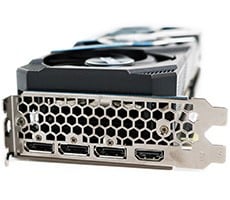NVIDIA GeForce 8800 GTX and 8800 GTS: Unified Powerhouses
F.E.A.R. is definitely a relatively taxing and impressive game engine with a very realistic particle system and a great physics engine in comparison to many other games currently on the market.
|
|
|
| One of the most highly anticipated titles of 2005 was Monolith's paranormal thriller F.E.A.R. Taking a look at the game's minimum system requirements, we see that you will need at least a 1.7GHz Pentium 4 with 512MB of system memory and a 64MB graphics card in the Radeon 9000 or GeForce4 Ti-classes or better, to adequately run the game. Using the full retail release of the game patched to v1.07, we put the graphics cards in this article through their paces to see how they fared with a popular title. Here, all graphics settings within the game were set to their maximum values, but with soft shadows disabled (Soft shadows and anti-aliasing do not work together currently). Benchmark runs were then completed at resolutions of 1,280x960 and 1,600x1,200, with anti-aliasing and anisotropic filtering enabled. |

Here our frame-rates are much more subdued and in fact at high resolution with 4X AA enabled, even a powerful card like the GeForce 7900 GTX gets a little pokey. In this test, the GeForce 8800 GTS again edges out the recently released Radeon X1950 XTX and once again the GeForce 8800 GTX reins supreme even over the entire lot, including the dual-GPU powered GeForce 7950 GX2. In terms of single GPU performance, the GeForce 8800 GTX is 40 - 45% faster than a Radeon X1950 XTX.







